If you’re a synthesizer fan, you may have come across a Pro-8 on the internet. With its stark black and white design and familiar font, it looks like a Prophet-5 or Prophet-600, and yet something seems… off. Maybe it’s the unusual programming matrix, which is very unlike analog-era Sequential. And then there’s the white pad for taking notes with a greasepaint pen. What is that all about? Surely this 1984 instrument can’t be a Sequential product. Well, it is and it isn’t, and the space between these two statements is where the real story lies.
I live in Japan. They come up for sale from time to time. I’ve even had one in my studio. It’s a nice-sounding synth, if a little underwhelming, but maybe you could say that about a number of other analog polys from the mid-80s. Ever since then, though, I’ve been a little obsessed with it. Why does it exist? If it wasn’t made by Sequential then who made it? And how does it relate to the Split-8, the version sold outside of Japan?
The real story is maybe not stranger than fiction—it was the 1980s, after all, when a lot of stranger things happened—but it is a fascinating one.
Sequential Circuits In The 1980s
By all accounts, the mid-‘80s was a challenging time for Sequential Circuits (SCI). Although it was one of the biggest American manufacturers of synthesizers then—thanks in large part to the runaway success of the Prophet-5—by 1984 it was having trouble replicating that accomplishment. There were a number of products that failed to live up to expectations, including computer peripherals and a programmable effects unit, as well as a line of relatively inexpensive synthesizers based around the CEM3394 chip, the Six-Trak, Max and MultiTrak. “We had a bad year in ’85,” Dave Smith said in Mark Vail’s book, Vintage Synthesizers. “We were never fully able to recover from those blunders.”
“The mood of the times was definitely tense,” remembers Chris Meyer, who worked at SCI as a programmer at the time. “They were in the process of working on the MultiTrak—a nice last hurrah for the one-VCO voice chip (synthesizers)—when this whole Split-8/Pro-8 thing came up.”
The Land Of The Rising Synth
Japan in the 1980s was an economic powerhouse. In the middle of a bubble economy, the general population had cash to spare and, thanks to a cultural love for music (it still boasts the world’s second largest music industry), synthesizers were flying off the shelf. This is one of the reasons why the Yamaha DX7 and Roland Juno-106 sold so well in general—a good portion was home sales. On the other hand, Japanese manufacturing was something like China’s is now: affordable and generally high quality. Because of this, many American synthesizer companies partnered with local outfits to manufacture and distribute their products in Japan.
For Sequential, that company was Moridaira. Established in 1966, Moridaira still exists today, distributing and selling guitars, effects and other instruments in Japan. No synthesizers, however. Moridaira doesn’t only sell instruments, though. It also manufactures them. Morris Guitars is a long-running acoustic guitar maker based in Matsumoto, a city in mountainous Nagano Prefecture famous for its many luthiers. In the 1980s, Moridaira also used the Morris name for its distribution activities.
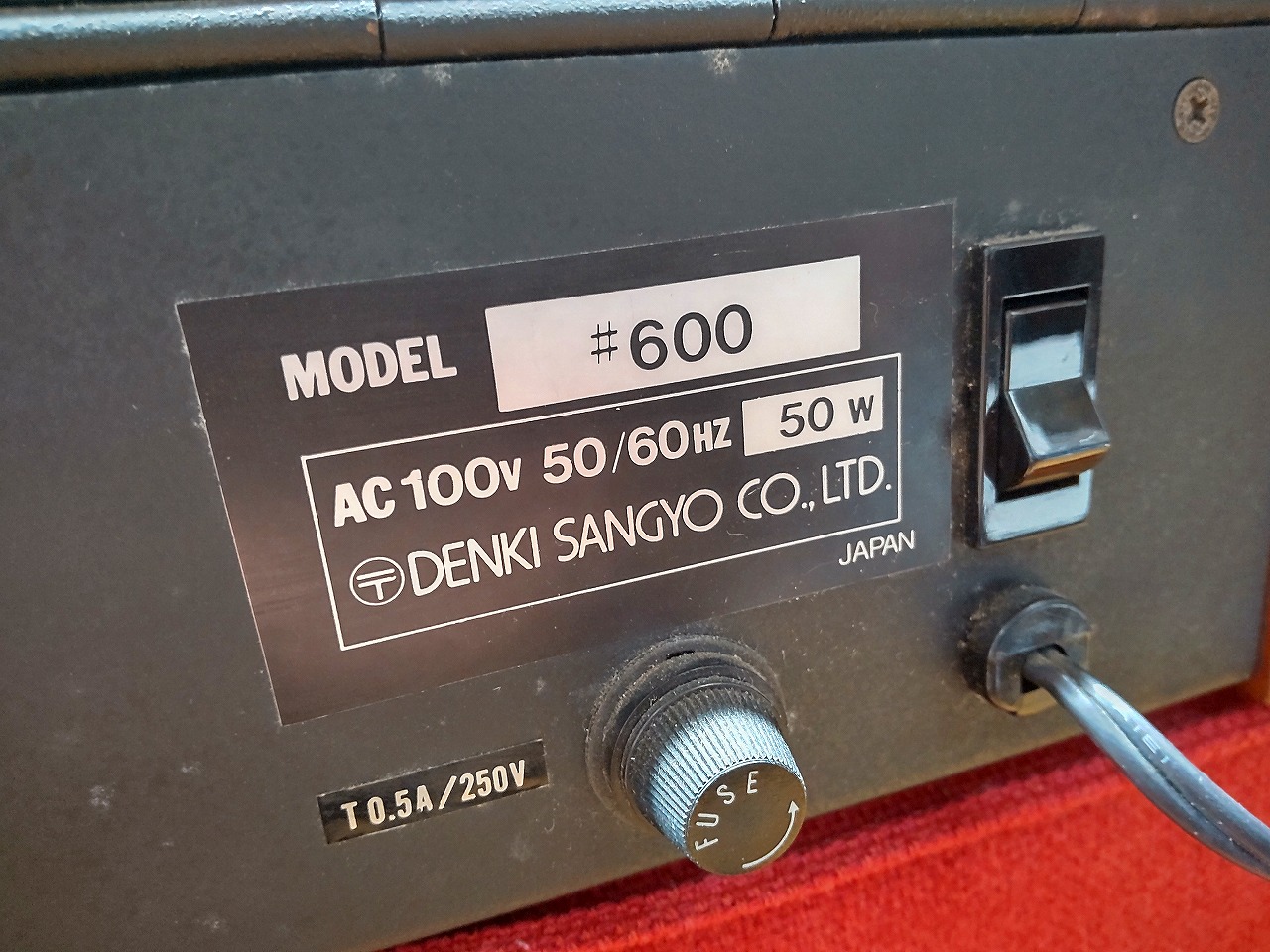
“Moridaira Music Musical Instruments Co. built some Prophet 600s, all DrumTraks, and all 220 VAC Six-Traks in Japan for Sequential Circuits in 1983, 1984 and 1985 as an electronic production contractor and international distributor,” David Sesnak tells us via email. David was the product manager at SCI at the time and has been the general product manager at Wine Country Sequential since SCI closed up shop in 1987.
Sequential products manufactured in Japan are identifiable by the badge on the rear panel that reads, “Denki Sangyo Co Ltd,” in English lettering. This is a very generic name however. It means “electronic industry” and is usually the second half of a manufacturer’s handle, such as Suzuki Denki Sangyo. Try to find any more information on Denki Sangyo, though, and you’ll likely come up empty-handed.
I ask Hideki Ishikawa of the Nakatsugawa Korg Museum if he is familiar with Denki Sangyo. “Morris was essentially a guitar maker,” he explains. “(Synthesizer) manufacturing must have been done at a separate place. Manufacturing was probably done at Denki Sangyo but nothing appears on the net about it.” Very mysterious.
Enter The Pro-8
Without warning, SCI’s Japanese distributor and contract manufacturer Moridaira suddenly came to them with a brand new Sequential Instruments synthesizer to be sold in Japan. Moridaira had developed and manufactured it with no input from the California company. It was called the Pro-8, short for Prophet-8, and it blind-sided everyone at SCI.
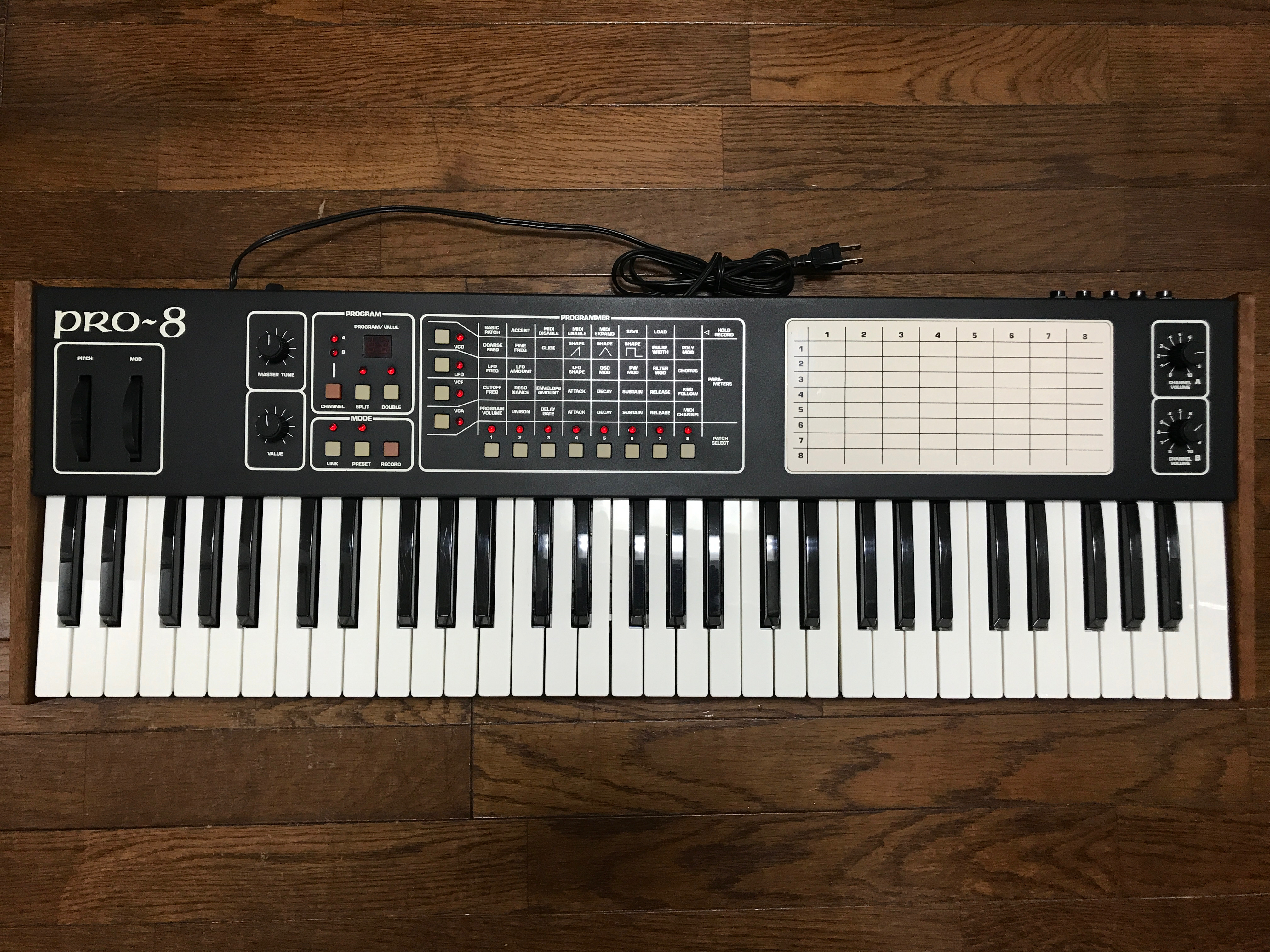
“The Pro-8 was designed and built by Moridaira … in Japan,” confirms David Sesnak. “It was based on CEM3394 technology and developed independently of Sequential Circuits Inc.” These would be the same Curtis CEM3394 chips that were in Six-Traks, the ones Moridaira was making for Sequential.
When asked about the Pro-8, Chris Meyer answers, “I was only peripherally aware of (that). My understanding was the Pro-8 was the result of Sequential's Japanese partner taking the Curtis chips used in the Six-Trak and deciding to design their own synth with them.”
Pro-8 Architecture
One look at the analog Pro-8 and it’s clear that it borrows some ideas from the Six-Trak. It also sounds like one too, thanks to those Curtis synth-on-a-chip ICs. However, there are some differences in both look and synthesis architecture.
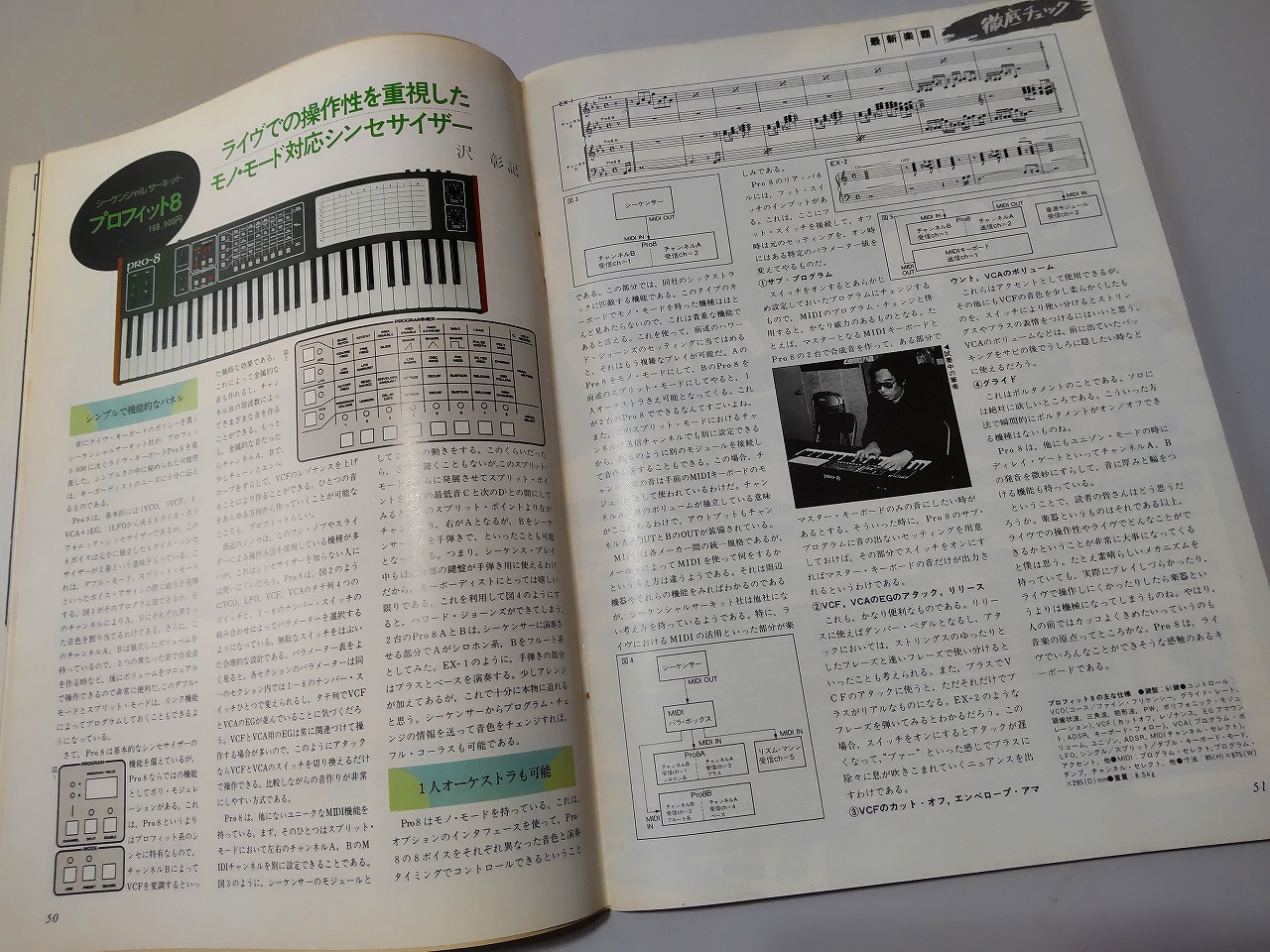
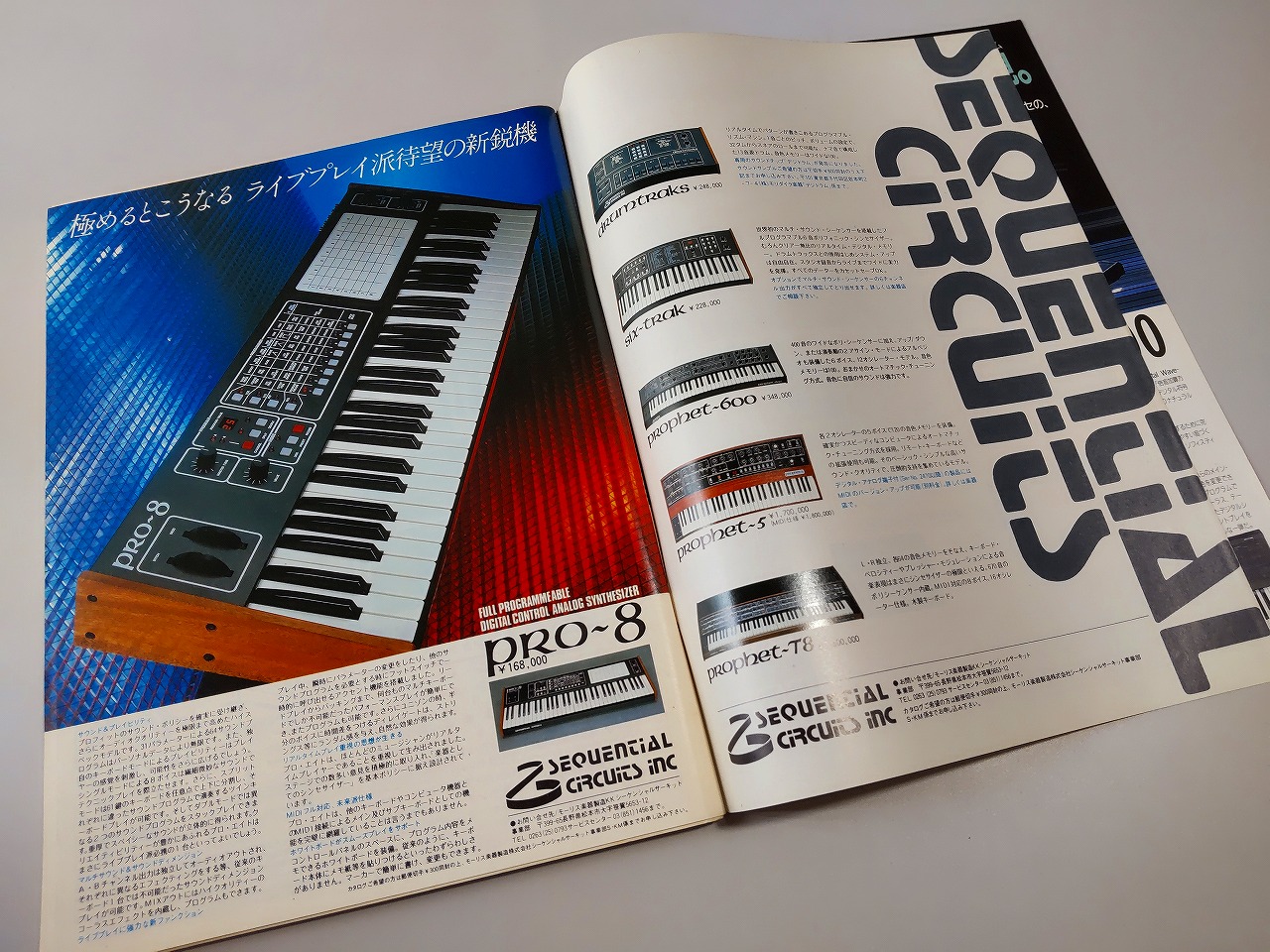
Rather than being six-part multitimbral like the Six-Trak, it has a dual layer synthesis system. (This is the split part of the Split-8 name.) It can be played as an eight-voice, single oscillator synth or a four-voice, dual oscillator one. When stacked in double mode, you can use filter FM to affect the output of one of the layers. Other than this, it has a fairly standard OSC-VCF-VCA signal path, which you program using the matrix-style layout and single value knob on the front panel.
As for its looks, it was clearly meant to appeal to fans of the Prophet-5 and Prophet-600. However, it’s hard to imagine the white slate appealing to anyone. Why you need a built-in notepad when the synth has memory is beyond me.
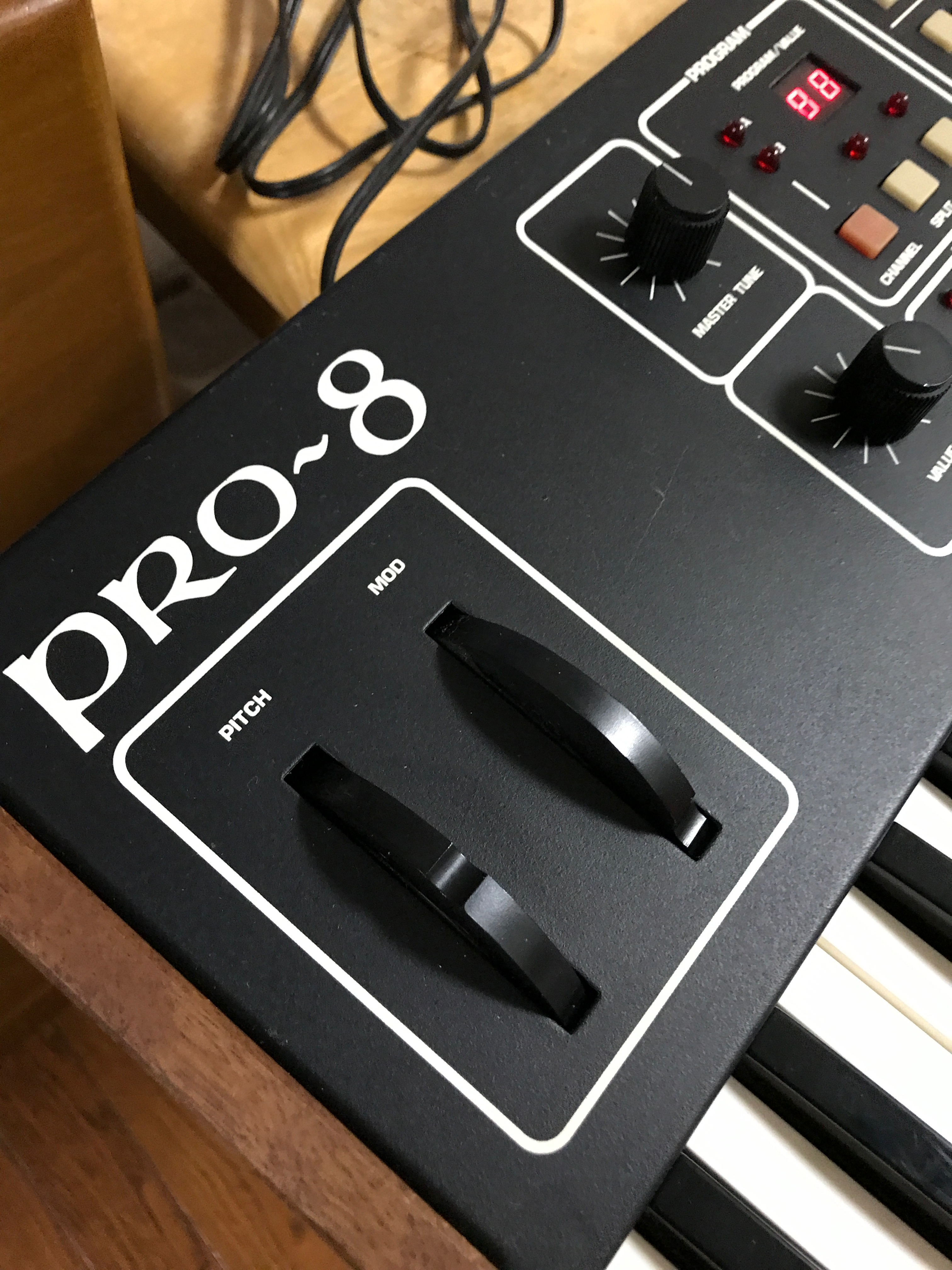
The note pad isn’t the only weird thing about it. While most synths have the power supply on the right and output jacks on the left (when facing the instrument from the front), the Pro-8 reverses this. It also doesn’t have a global volume knob but two separate ones, one for each layer, which is an unusual choice. It does, however, have a mix jack output.
Enter The Split-8
I wasn’t able to find any sales data on the Pro-8 in Japan, and Moridaira didn’t respond to my inquiries, but it doesn’t seem like it was the success the Japanese company had hoped for. “After Pro-8 sales faltered (in Japan),” explains David Sesnak, “it was renamed Split-8 with hopes of having it distributed in the USA through the SCI dealer network.”
Apparently Dave Smith and the other members of SCI management were none too happy about this turn of events. According to the memory of some former SCI staff, Moridaira requested that Sequential distribute the synth in the US. Management asked for some design tweaks to bring it in line with its current product range of Max, MultiTrak and Tom, and grudgingly accepted Moridaira’s proposal.
When asked what the general feeling was of SCI employees, Chris Meyer states, “Upset. From what I heard filtering down from management and marketing, Moridaira did it without authorization or warning, and somehow expected (that) Sequential would be willing to adopt it and sell it into other markets.”
Sequential Circuit’s Last Analog Synthesizer
SCI did accept the Split-8 for distribution in the US, however. Before letting it out into the wild, SCI made some small changes to the synthesizer. This included new presets. As part of this process, product specialist John Bowen became involved. John was responsible for all of the factory presets, sequences and drum patterns for all of SCI’s products from 1978 until they finished up in 1987 with the Prophet 3000. “I was told to just make all the factory presets, as I did for all the other Sequential products,” he remembers.
The Split-8 was Sequential Circuit’s last analog synthesizer. By this time, SCI was more focused on the MultiTrak and its newer, digital-oriented releases, the Prophet VS and subsequent samplers. “Sequential being able to upgrade its spec and appearance was a small consolation, as I remember,” says Chris Meyer, “but they didn't put much into pushing the product, especially as they had their own MultiTrak (which I consider to be the ultimate evolution of using that Curtis/SENTE voice-on-a-chip) in development.”
Not content with just distribution, Moridaira reportedly next asked Sequential to buy out its remaining stock of Split-8s. “Unfortunately, by 1986 SCI had no interest in analog keyboards and elected not to purchase any Split-8s,” explains David Sesnak. “Sequential Circuits was fully focused on SCI digital sampling technology and manufacturing the Prophet 2000, Studio 440 and Prophet 3000 samplers.”
To liquidate its final Split-8 units, Moridaira is said to have sought out other sales channels. “Moridaira now had several hundred manufactured Split-8s sitting in their warehouse that would not be purchased by Sequential Circuits,” remembers David. “Arrangements were made through an independent third party for Sam Ash Music of New York City to purchase the entire lot of Split-8s. As a result of that transaction the Split-8 became the last analog synthesizer to carry the Sequential Circuits brand.”
Reappraising the Pro-8 and Split-8
This story is almost 40 years old now. While the Pro-8 and Split-8 may not have been huge hits on release, with time they’ve come to be regarded as if not classics then as instruments worthy of a reappraisal. With their Curtis CEM3394 chips and smooth sound, oddball design and intriguing history, both versions make for worthwhile purchases, especially if you don’t have any of SCI’s other CEM3394 synths.
In Japan, the Pro-8 tends to get written about in synthesizer books much more often than the Split-8 does in America. Maybe this is because it was made in Japan. However, there’s rarely mention in Japanese literature that it’s not a true Sequential product, something that non-Japanese sites often make clear.
While a number of former SCI employees I spoke to remarked that they were not so excited by the line of single-oscillator CEM3394 synths at the time, preferring the sound of the fatter Prophet-5 and its successors, the Prophet-10 and T-8, they are happy that people have come to love the single VCO synths—and the Split-8.
“It's the real red-haired stepchild of the Sequential lineup,” says Chris Meyer. “But I've heard of people who love theirs today, and in the end isn't that what really matters?”
